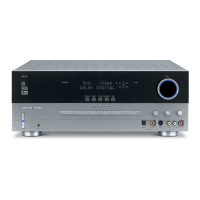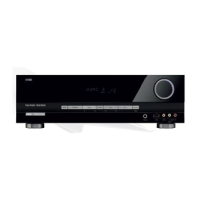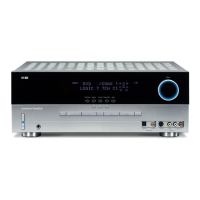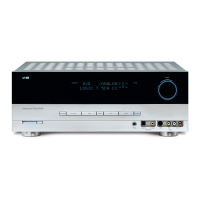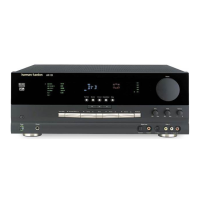Step 4. Connect AM and FM antennas (as shown above); see page 12.
Step 5. Connect source components, as shown in Figures 4 and 5, and the
Device Connection Options chart on the back of this Guide (see
pages 12–13).
AUDIO connections: Right channel (red) on source to right (red)
on AVR, and left channel (white) on source to left (white) on AVR.
DIGITAL AUDIO connections, if available: Choose either coax
(orange) to coax (orange) OR optical to optical for each device.
The Coax 1 input defaults to the DVD player, but may be reassigned.
Assign the other digital inputs and outputs as appropriate for your
equipment (see Step 7).
VIDEO connections: Choose either composite (yellow) or S-Video
(4-pin) for each video source. Connect the composite and S-Video
Monitor outputs to your Video Monitor (TV). Switch your TV set’s input
to match the type of video used for the currently selected source.
Step 6. Plug all components into AC power outlets. The outlets on the back
of the AVR 135 should be used
only
for low-current products, such
as CD or DVD players, and the total should not exceed 100 watts.
Basic Receiver Configuration
Step 7. Select digital inputs: If your DVD is connected to Coax 1, no adjust-
ment is needed. For any other digital-device connections, use the
On-Screen In/Out Setup menu or the front-panel Digital Select button
and the arrow buttons to select an optical or coax digital input (see
pages 16 and 23).
Step 8. Select a surround mode: Press the Surround Mode button on the
front panel to select Dolby
®
Pro Logic
®
II – Movie. (You may select
other modes later as you become familiar with the AVR 135; see
pages 16–17 and 22–26.)
Step 9. Configure speakers: No action is needed if you have five or six
“small” satellite-type speakers and a subwoofer. Otherwise, use the
OSD Speaker Setup Menu, or press the Speaker button and then the
Set and arrow buttons to select the correct speaker choices for your
system (see pages 17–19).
Step 10. Set output levels: Set the Balance to 12 o’clock, and the Volume to
–15dB. Sit in the listening position and press the Test button on the
remote. The Test tone (which sounds like static) will circulate from
speaker to speaker. Press the up/down arrow keys to adjust the level of
each speaker until they all sound the same. If you have an SPL meter,
set it to 75dB on the C-Weighting, Slow scale. Press the Test button
again to complete the process. In six-speaker systems, the levels for
both surround back channels will be set using the single surround
back speaker to optimize Logic 7
®
and other 7-channel processing;
see pages 20 – 21.
Step 11.
Your system is configured – sit back and enjoy!
Figure 4 – Audio Connections
Dashed lines (––––) indicate coax and optical
digital audio connections. Choose either type
(but not both) for each digital audio source.
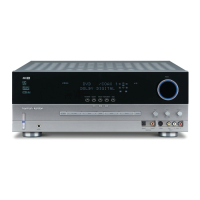
